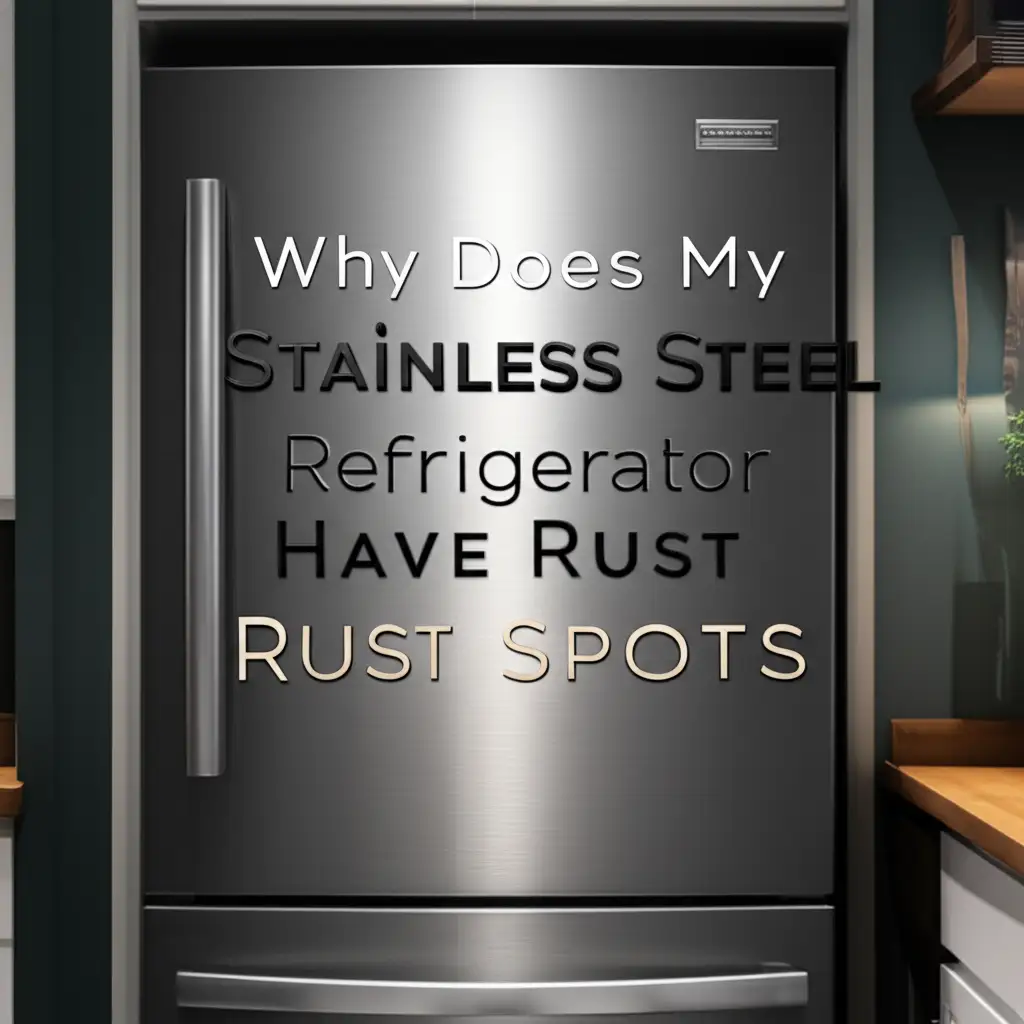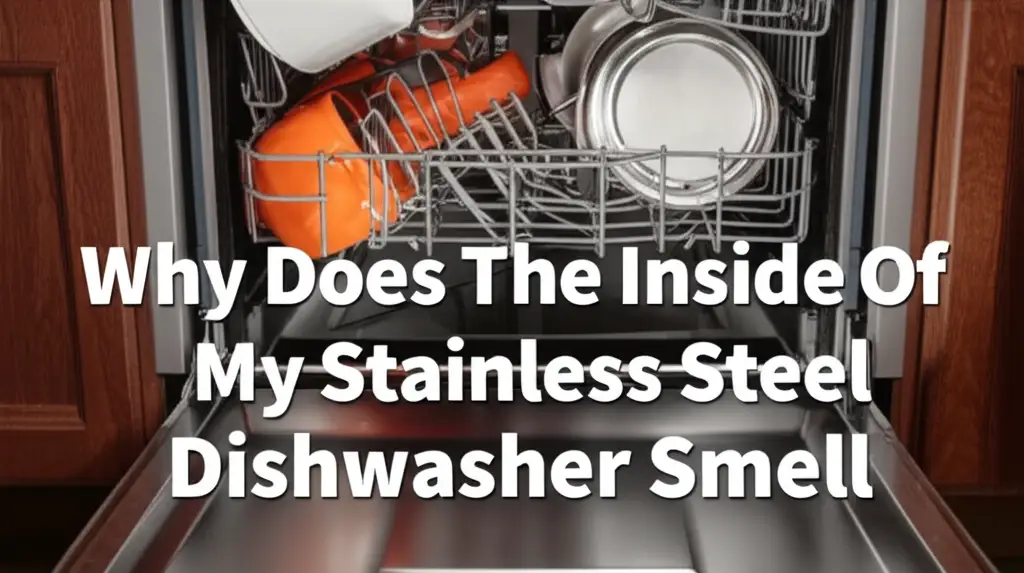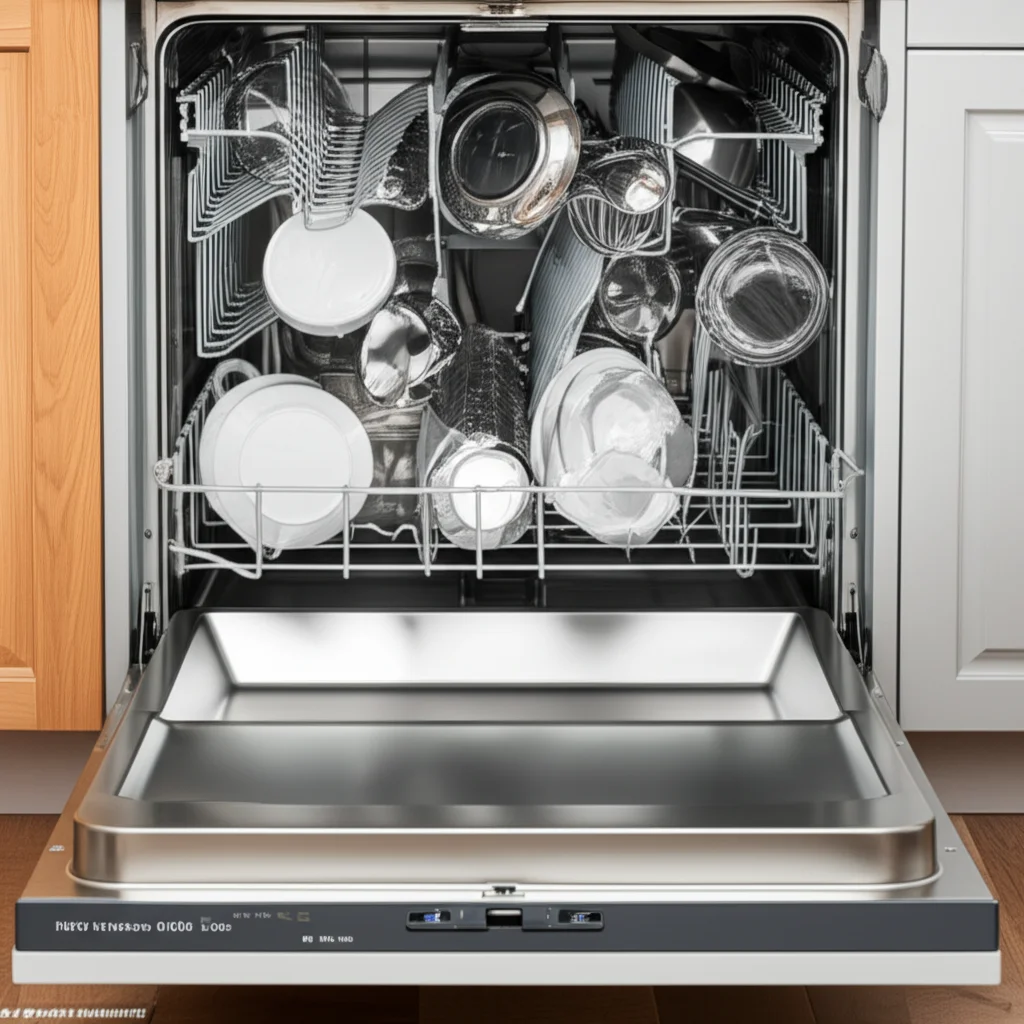· Todd Martin · Appliance Care · 13 min read
Can I Clean My Stainless Steel Refrigerator With Windex

Is Windex Safe for Stainless Steel? A Guide to Cleaning Your Refrigerator
You might wonder, “Can I clean my stainless steel refrigerator with Windex?” It is a common question. Many people use Windex for windows and mirrors. They hope it will give their stainless steel appliances the same streak-free shine. However, stainless steel is different from glass. It needs specific care to keep its appearance and protect its finish. Using the wrong cleaner can cause damage or leave unwanted marks.
I understand the desire for a spotless kitchen. A gleaming refrigerator makes a kitchen look clean and inviting. This article helps you understand why Windex might not be the best choice. It offers safer, more effective methods for cleaning your stainless steel refrigerator. We will discuss common issues, ideal cleaning agents, and proper cleaning steps. My goal is to help you maintain your appliance for years.
Takeaway
- Windex is not ideal for stainless steel due to ammonia and dyes, which can cause streaks and damage.
- Always clean stainless steel with the grain to avoid scratches and improve results.
- Mild dish soap, white vinegar, or specialized stainless steel cleaners are safer alternatives.
- Regular cleaning and proper drying prevent buildup and keep your refrigerator looking new.
Quick Answer: Can I Clean My Stainless Steel Refrigerator With Windex?
No, you should not clean your stainless steel refrigerator with Windex. Windex contains ammonia and dyes that can leave streaks, discolor the finish, or even cause damage over time. It is best to use mild soap and water, white vinegar, or a dedicated stainless steel cleaner for optimal results.
The Problem with Windex on Stainless Steel Surfaces
Many people reach for Windex when they want a sparkling clean. It works wonderfully on glass. Yet, stainless steel is a unique material. It has a specific finish that needs gentle care. Using Windex on your stainless steel refrigerator can cause problems. The main ingredients in Windex, like ammonia, are too harsh for this type of surface.
Ammonia is a strong cleaning agent. It cleans glass very well. On stainless steel, it can leave behind a cloudy film or visible streaks. This happens because ammonia reacts with the metal’s surface. It does not evaporate cleanly like it does from glass. Over time, repeated use might even dull the protective coating on your appliance. This dullness makes your refrigerator look less appealing.
Another issue comes from the blue dyes in Windex. These dyes can leave a residue on stainless steel. This residue attracts dust and fingerprints more easily. It makes your refrigerator look dirty faster after cleaning. Some people report a yellowish tint forming on their appliance after using Windex regularly. This discoloration is hard to remove. I always recommend avoiding cleaners with dyes for stainless steel. Always choose clear solutions or products designed for the material. For more general advice on what to avoid, consider learning how to clean stainless steel properly. You might also find it helpful to know how to clean mirror without Windex to understand why certain cleaners are better for specific surfaces.
Understanding Your Stainless Steel Finish
Before you clean any stainless steel appliance, it helps to know about its finish. Stainless steel looks sleek, but it is not a uniform surface. It has a “grain,” much like wood. This grain is the direction in which the metal was brushed during manufacturing. You can usually see it if you look closely. The grain runs either horizontally or vertically across your refrigerator door.
Cleaning against the grain can create tiny scratches. These scratches are often micro-scratches. They may not be visible right away. Over time, however, they can accumulate. This makes your appliance look dull or streaky. It also makes it harder to get a truly clean finish. Always wipe in the direction of the grain for best results. This ensures you are cleaning with the natural lines of the metal.
Most modern stainless steel appliances have a clear protective coating. This coating helps resist fingerprints and smudges. It also protects the metal from minor damage. Harsh chemicals, like those found in Windex, can degrade this coating. Once the coating is damaged, your appliance becomes more prone to stains, fingerprints, and even rust. Knowing this helps me choose the right cleaning products. It ensures I keep the protective layer intact. Proper care extends the life and beauty of your stainless steel refrigerator. For comprehensive information on maintaining your appliance, refer to our guide on how to clean a stainless steel fridge.
Safe and Effective Alternatives to Windex
Since Windex is not the best choice, what should you use? Luckily, many safe and effective alternatives exist. These options will clean your stainless steel refrigerator without damage. They also leave it looking shiny and new. My favorite solutions are often found right in my kitchen.
One excellent option is a simple mixture of mild dish soap and warm water. Dish soap is gentle but effective at cutting through grease and grime. You only need a few drops in a bowl of warm water. Use a soft microfiber cloth dipped in this solution. Wipe your refrigerator down, following the grain. This method cleans the surface without leaving harsh residues. It is a cost-effective and safe way to keep your appliance clean.
Another fantastic natural cleaner is white vinegar. White vinegar works wonders for removing smudges and minor stains. Mix equal parts white vinegar and water in a spray bottle. Spray lightly onto a microfiber cloth, then wipe the surface. Vinegar helps to remove water spots and leaves a streak-free shine. Be sure to dry the surface immediately after with a clean, dry cloth. This prevents any vinegar smell from lingering. Vinegar is also great for breaking down tough spots. If you have specific issues like grease, learn how to clean grease off stainless steel. For more stubborn stains, our guide on how to clean stains on stainless steel provides further details.
For an added shine, especially after cleaning, a tiny amount of olive oil can work wonders. After cleaning and drying your refrigerator, put a few drops of olive oil on a clean, dry microfiber cloth. Buff the oil into the stainless steel, following the grain. This creates a protective barrier that helps repel fingerprints. It also gives the appliance a beautiful, polished look. Remember, a little goes a long way. Too much oil can make the surface greasy. You can also buy specialized stainless steel cleaners. These products are formulated to be safe and effective. They often come in sprays or wipes. Always read the label and follow the directions for these products. They are designed for the material. They help you achieve the best results without worry.
Step-by-Step Guide to Cleaning Your Stainless Steel Refrigerator
Cleaning your stainless steel refrigerator is simple once you know the steps. Following a routine helps keep your appliance in top condition. I always start with preparation. This makes the cleaning process smoother.
Pre-Cleaning Steps
First, clear the surface of your refrigerator. Remove any magnets, notes, or artwork. If you have spills or sticky spots, wipe them with a damp cloth beforehand. This prevents spreading dirt during the main cleaning. I also like to have two microfiber cloths ready. One for cleaning and one for drying and buffing. This ensures a streak-free finish. Microfiber cloths are gentle on the surface. They do not leave lint.
Cleaning with a Mild Solution
Now, it is time to clean. Dip your cleaning microfiber cloth into your chosen solution. This could be mild dish soap and warm water or your vinegar solution. Wring out the cloth well. It should be damp, not dripping wet. Locate the grain of your stainless steel. It is usually easy to see. Wipe the entire surface of the refrigerator, moving with the grain. Apply gentle, even pressure. For stubborn spots, you might need to go over them a few times. Avoid scrubbing vigorously, as this can scratch the surface. Ensure you clean every part of the stainless steel, including handles. Handles often collect more grime. This method is similar to how you would approach how to clean your stainless steel dishwasher.
Drying and Polishing for Shine
This step is critical for preventing streaks. Immediately after cleaning a section, use your second clean, dry microfiber cloth. Wipe the area thoroughly. Move with the grain again. This removes any excess moisture and cleaning solution. It also helps to buff the surface. Keep wiping until the stainless steel is completely dry. Any lingering moisture can leave water spots. For an extra shine, you can use a few drops of olive oil as described earlier. Buff it into the dry surface with a separate clean cloth. This final step enhances the luster and helps repel fingerprints. It keeps your refrigerator looking cleaner for longer. If you have tough hard water stains, learning how to clean hard water stains on stainless steel refrigerator can be a great next step.
Tackling Common Stainless Steel Issues
Stainless steel is beautiful, but it can show marks easily. Fingerprints, smudges, and water spots are common. You can deal with these issues effectively. Knowing the right approach saves time and effort.
Fingerprints are perhaps the most common issue. The oils from our hands transfer directly onto the surface. To remove them, use a clean microfiber cloth. Lightly dampen it with water or a vinegar-water mix. Wipe gently in the direction of the grain. Dry immediately with a second clean, dry cloth. This simple method usually takes care of fingerprints quickly. For routine touch-ups, a quick wipe with a dry microfiber cloth often works too.
Water spots are another frequent problem, especially in areas with hard water. These are mineral deposits left behind when water evaporates. A solution of equal parts white vinegar and water is excellent for water spots. Spray the solution onto a clean cloth, not directly onto the appliance. Wipe the affected area firmly, following the grain. The vinegar helps dissolve the mineral buildup. Dry completely with a clean, dry cloth to prevent new spots from forming. If the spots are very stubborn, you might need to let the vinegar solution sit for a minute before wiping.
Minor scratches can also appear on stainless steel. These are tricky, as they are actual damage to the surface. For very light surface scratches, some specialized stainless steel scratch removal kits can help. These kits often contain a fine abrasive and a polishing compound. You apply them carefully, following the instructions. However, these kits are not for deep scratches. They work best on superficial marks. Always test in an inconspicuous area first. For more serious damage, like deep scratches or dents, professional help might be needed. If you are dealing with deeper marks, check out our guide on how to remove scratches from stainless steel refrigerator door. Similarly, if your appliance has physical impacts, learning how to get dents out of your stainless steel refrigerator can be helpful.
Maintenance Tips for Long-Lasting Shine
Keeping your stainless steel refrigerator looking its best involves more than just cleaning. Regular maintenance is key. Following a few simple practices can extend its life and maintain its shine for years.
First, establish a regular cleaning schedule. For most households, a weekly wipe-down is sufficient. This prevents the buildup of grime and fingerprints. It also makes deeper cleaning less frequent. A quick wipe with a damp microfiber cloth and then a dry one can keep things looking neat. This consistent effort prevents major cleaning tasks. It keeps your refrigerator gleaming without much effort.
Consider applying a protective coating or polish. After a thorough cleaning, you can use specialized stainless steel polish. These products often contain oils or waxes that create a barrier. This barrier helps repel fingerprints and smudges. It also offers some protection against minor scratches. Read the product instructions carefully. Apply a thin, even coat. Buff it gently with a clean, dry microfiber cloth. This adds an extra layer of defense. It also gives a deep, rich shine to your appliance.
Finally, be mindful of what touches your stainless steel. Avoid abrasive cleaners, scouring pads, or steel wool. These can permanently scratch the surface. Use only soft cloths, such as microfiber or cotton. Be careful with acidic foods or cleaning products. Spills from citrus juices or tomatoes can etch the surface if left too long. Wipe them up immediately. This careful approach ensures your stainless steel refrigerator remains a beautiful centerpiece in your kitchen. It stays looking new for many years.
FAQ Section
Can Windex permanently damage stainless steel?
Windex may not cause immediate, permanent damage. However, its ammonia and dyes can dull the finish and leave streaks over time. Repeated use might degrade the protective coating on your stainless steel. This makes it more prone to future damage and difficult to keep clean.
What is the best household cleaner for stainless steel?
The best household cleaner for stainless steel is often a simple mixture. Mild dish soap and warm water work very well for daily cleaning. For smudges and water spots, a solution of equal parts white vinegar and water is effective. Always use a soft microfiber cloth and wipe with the grain.
How often should I clean my stainless steel refrigerator?
For general maintenance, wipe your stainless steel refrigerator weekly. This helps remove fingerprints and light smudges. For a deeper clean, tackling spills or tougher grime, cleaning once a month is usually sufficient. Regular, light cleaning prevents heavy buildup.
Can I use paper towels to clean stainless steel?
It is best to avoid using paper towels on stainless steel. Paper towels, even soft ones, can be abrasive. They might leave tiny scratches on the surface. They also tend to leave lint behind. Microfiber cloths are much gentler and more effective. They pick up dirt without scratching or leaving residue.
What causes streaks on stainless steel?
Streaks on stainless steel are often caused by improper cleaning methods. This includes using harsh cleaners like Windex, not wiping with the grain, or not drying the surface completely. Leftover cleaning solution or water droplets can dry and leave visible marks. Always dry and buff immediately after cleaning.
Conclusion
The question, “Can I clean my stainless steel refrigerator with Windex?” now has a clear answer. While Windex is a common household cleaner, it is not ideal for your stainless steel refrigerator. Its ammonia and dyes can leave streaks, dull the finish, and potentially harm the protective coating over time. I have learned that gentle care is best for these beautiful appliances.
Instead, simple, effective alternatives work best. Mild dish soap and warm water are excellent for daily cleaning. A white vinegar and water solution tackles smudges and water spots. Always remember to clean with the grain of the stainless steel. Use a soft microfiber cloth. Dry the surface completely to prevent streaks. By following these easy steps, you can maintain the elegant shine of your refrigerator. Give these methods a try. Your stainless steel refrigerator will thank you. Enjoy a spotless, gleaming kitchen every day!
- stainless steel cleaning
- refrigerator maintenance
- windex on appliances
- streak-free cleaning
- kitchen cleaning
- appliance care tips





